TrailMap: Pheromone-Based Adaptive Peer Matching for Sustainable Online Support Communities
Abstract
1. Introduction
1.1. The Scalability and Sustainability Crisis in Digital Peer Support
1.2. Biomimicry for Decentralised Optimisation: The Ant Colony Metaphor
1.3. The TrailMap Hypothesis and Contribution
- Novel problem framing: We are the first to frame the challenge of online support sustainability as a dynamic, decentralised resource allocation problem solvable with a stigmergic approach;
- A novel pheromone mechanism: Our pheromone deposition rule is a specific implementation that directly translates subjective human feedback into a mechanism for both positive and negative reinforcement, allowing the community to self-police and suppress unhelpful actors;
- A novel conceptual contribution: We demonstrate how a classic computational challenge—the ‘cold start’ problem—is transformed into a feature for social sustainability and community renewal (discussed in Section 5.1);
- A novel empirical validation: The two-phase study, combining agent-based simulation with a human-centered RCT, provides a rare and robust validation of a biomimetic algorithm in a real-world social context.
- Significantly decrease the wait time for a help-seeker to receive a high-quality response;Dynamically identify and prioritise highly rated helpers, improving the overall perceived quality of support;
- Distribute the load of responding more equitably, mitigating the structural conditions that lead to super-helper burnout.
1.4. Positioning TrailMap Within Evolutionary Optimisation
2. The TrailMap Algorithm
2.1. System Model
2.2. Pheromone Deposition (Trail Reinforcement)
2.3. Path Selection (Probabilistic Routing)
2.4. Pheromone Evaporation (Trail Decay)
3. Materials and Methods
3.1. Study 1: Agent-Based Simulation
- Roles: At any given time, a fixed proportion of agents were designated as active seekers (20%, n = 200) or potential helpers (80%, n = 800). Seeker agents generated new support requests at a fixed rate.
- Helper Characteristics: To model a realistic population, each helper agent was assigned an intrinsic, latent ‘helpfulness’ score, a value drawn from a Beta distribution with parameters α = 2 and β = 5. This created a right-skewed distribution, representing a community with many moderately helpful individuals and a smaller number of exceptionally effective helpers.
- Interaction Model: When a seeker agent receives a response from a helper agent, the helpfulness rating it provides is stochastically generated. The rating is drawn from a discrete distribution, the mean of which is the helper’s latent helpfulness score, with Gaussian noise added to simulate the subjective and variable nature of human perception.
- Conditions: Two experimental conditions were simulated.
- TrailMap: Help-seekers were matched to available helpers using the full TrailMap algorithm, as described in Section 2.
- Random Routing (Control): Help-seekers are matched to any available helper with a uniform probability, simulating the baseline condition in many existing peer support platforms.
- Sensitivity Analysis: To determine the optimal evaporation rate, the TrailMap condition was simulated across five distinct pheromone half-lives: 6, 12, 24, 48, and 72 h. The half-life () was related to the hourly evaporation rate (ρ) according to the formula
- Mean Time to Helpful Response (TTHR): The primary efficiency metric, defined as the average time in minutes from the moment a seeker agent generates a request until it receives a response that it rates as (‘Helpful’ or ‘Very Helpful’).
- Load Distribution (Gini Coefficient): The primary equity metric. The Gini coefficient, a standard measure of statistical dispersion typically used for income inequality, was applied to the distribution of requests handled per helper agent over a 30-day simulation [41,42]. Its application to measure heterogeneity and load imbalance in complex networks is well established [29,43,44,45]. A Gini coefficient of 0 indicates perfect equality (all helpers handle an identical number of requests), whereas a coefficient of 1 indicates perfect inequality (one helper handles all requests). This metric provides a robust, single-value measure of workload concentration and the “super-helper” effect.
3.2. Study 2: Human-Centered Pilot Study
- TrailMap Group (n = 36): Participants used a web-based peer support application where backend matching was governed by the TrailMap algorithm using the optimal 48 h pheromone half-life identified in Study 1.
- Control Group (n = 35): Participants used an identical user interface, but the backend matching algorithm was purely random, connecting seekers to any available online helper with a uniform probability. Participants in both groups were instructed to log in to the platform at least three times per week and to engage as they saw fit, either by posting requests for support or responding to requests from others.
- Measures:
- Primary Outcome (Efficiency): Median wait time to first response, measured in minutes. This was calculated from server-side timestamps from the moment a request was submitted to the moment the first response was posted. System logs were used for this purpose.
- Secondary Outcome (Quality): Mean helpfulness rating. After each interaction, seekers were prompted to rate the helpfulness of the response(s) they received on the same 1–5 Likert scale used in the algorithm’s deposition rule.
- Qualitative Feedback: At the conclusion of the four-week study, all participants were invited to complete a brief open-ended survey. The survey included questions about their overall experience, perception of the matching process, level of trust in the system, and any suggestions for improvement.
- Data Analysis: All statistical analyses were conducted using R (version 4.2.2).
4. Results
4.1. Simulation Findings: Efficiency and Equity
4.2. Pilot Study Validation: Real-World Performance
- Perceived Intelligence: Users in the TrailMap group frequently used words such as “smart”, “intuitive”, and “adaptive” to describe the matching process. One participant commented, “It felt like after a week, the system learned who was good at giving advice and put me in touch with them.” [P18]. In contrast, control group users often described their matches as “random” or “a lottery” [P61].
- Increased Trust: TrailMap participants reported a higher degree of trust in the platform’s ability to provide a useful connection. This perception of reliability and intelligence appears to foster greater willingness to engage and share. This aligns with the design principles, suggesting that system predictability and effectiveness are key drivers of user trust in health technologies [47,48,49,50,51,52].
- Emergent Mentorship: A network analysis of the interaction graph from the TrailMap group (visualised in Figure 6) revealed the spontaneous emergence of several distinct helper clusters. These were small groups of highly rated users who accumulated strong pheromone trails and became de facto community mentors, frequently receiving requests from a wide range of seekers without any formal designation or top-down curation. This emergent social structure was absent from the random graph of the control group.
5. Discussion
5.1. Principal Findings: From Efficiency to Ecosystem Sustainability
5.2. TrailMap as Problem-Driven Biomimicry
- Biological Analogue: An ant colony seeking efficient paths to food sources in a dynamic environment;
- Technological Problem: A help-seeker in a digital community seeks an efficient path to a helpful peer in a dynamic social environment;
- Abstraction and Transfer: We systematically mapped the core principles of a biological system to our computational framework, as follows:
- –
- Ants → Peer users (seekers and helpers)
- –
- Pheromone Trail → A numerical weight (τ) on a user-interaction path
- –
- Pheromone Deposition → User-provided helpfulness ratings
- –
- Pheromone Evaporation → A time-based exponential decay function (ρ)
- –
- Probabilistic Path Following →A stochastic routing algorithm biasing seekers towards high-pheromone helpers.
5.3. Ethical Implications and Algorithmic Governance
- The ’Negative Reinforcement Mechanism Guard-Rail: The pheromone deposition rule, , is a critical safety feature. This allows the community to collectively and dynamically suppress harmful content or actors. When users are rated as unhelpful or providing bad advice, they accumulate negative pheromones, making the system actively learn to avoid them. This provides a decentralised, bottom-up mechanism to address the pervasive challenge of misinformation in online health communities [6,60], a challenge that has become increasingly critical as social platforms grapple with their dual role as sources of both support and harmful polarisation [61,62].
- Human-in-the-Loop Moderator Pruning: The algorithm is designed to augment, not replace, human oversight. The system should feature a moderator dashboard that visualises high-pheromone trails and flags users who, despite high ratings, may be exhibiting problematic behaviour (e.g., monopolising conversations). This allows human moderators to focus their attention efficiently where needed, addressing the challenge of moderator overload in large communities [63,64]. Moderators must have the power to manually inspect, “prune”, or completely reset the pheromone trails of any user identified as spreading misinformation or engaging in predatory behaviour, effectively removing them from the trusted helper pool.
- Transparency and Explainable AI (XAI): User trust is paramount for engagement and disclosure in digital health settings [47,49,50,51,52]. To foster this trust, the system’s operations should not be an opaque “black box” [65]. While the full probabilistic model may be too complex to display, the system should provide simple, clear explanations for its matches, aligning with the principles of XAI. For example, a user could be shown a message like, “You were connected with Jane because she has been rated as very helpful by others recently”. This transparency respects user agency and builds confidence in the platform’s integrity.
5.4. Limitations
6. Future Research and Conclusions
6.1. Future Directions for Digital Therapeutics and HCI
6.2. Conclusions
Author Contributions
Funding
Informed Consent Statement
Data Availability Statement
Acknowledgments
Conflicts of Interest
References
- Figueroa, C.A.; Aguilera, A. The need for a mental health technology revolution in the COVID-19 pandemic. Front. Psychiatry 2020, 11, 523. [Google Scholar] [CrossRef]
- Kent, A.; Strid, S.; Sandström, L.; Callerstig, A.C. RESISTIRÉ D4.4: Summary Report on Qualitative Indicators (Version 1). Available online: https://zenodo.org/records/8383361 (accessed on 18 June 2025).
- Areán, P.A.; Ly, K.H.; Andersson, G. Mobile technology for mental health assessment. Dialogues Clin. Neurosci. 2016, 18, 163–169. [Google Scholar] [CrossRef]
- Torous, J.; Myrick, K.J.; Rauseo-Ricupero, N.; Firth, J. Digital mental health and covid-19: Using technology today to accelerate the curve on access and quality tomorrow. JMIR Ment. Health 2020, 7, e18848. [Google Scholar] [CrossRef] [PubMed]
- Marshall, P.; Booth, M.; Coole, M.; Fothergill, L.; Glossop, Z.; Haines, J.; Lobban, F. Understanding the impacts of online mental health peer support forums: Realist synthesis. JMIR Ment. Health 2024, 11, e55750. [Google Scholar] [CrossRef] [PubMed]
- Naslund, J.A.; Aschbrenner, K.A.; Marsch, L.A.; Bartels, S.J. The future of mental health care: Peer-to-peer support and social media. Epidemiol. Psychiatr. Sci. 2016, 25, 113–122. [Google Scholar] [CrossRef] [PubMed]
- Fortuna, K.L.; Naslund, J.A.; LaCroix, J.M.; Bianco, C.; Brooks, J.; Zisman-Ilani, Y.; Deegan, P.E. Digital peer support mental health interventions for people with a lived experience of a serious mental illness: Systematic review. JMIR Ment. Health 2020, 7, e16460. [Google Scholar] [CrossRef]
- Ali, K.; Farrer, L.M.; Gulliver, A.; Griffiths, K.M. Online peer-to-peer support for young people with mental health problems: A systematic review. JMIR Ment. Health 2015, 2, e19. [Google Scholar] [CrossRef]
- Fogg, B.J. A Behaviour model for persuasive design. In Proceedings of the 4th International Conference on Persuasive Technology, Claremont, CA, USA, 26–29 April 2009; pp. 1–7. [Google Scholar] [CrossRef]
- Aral, S.; Alstyne, M.V. The diversity-bandwidth trade-off. Am. J. Sociol. 2011, 117, 90–171. [Google Scholar] [CrossRef]
- Gasparini, M.; Clarisó, R.; Brambilla, M.; Cabot, J. Participation inequality and the 90-9-1 principle in open source. In Proceedings of the 16th International Symposium on Open Collaboration, Virtual, 25–27 August 2020; pp. 1–7. [Google Scholar] [CrossRef]
- van Mierlo, T. The 1% rule in four digital health social networks: An observational study. J. Med. Internet Res. 2014, 16, e33. [Google Scholar] [CrossRef]
- Baker, J.; Vincent, R. The Super-Helper Syndrome: A Survival Guide for Compassionate People; Flint: Cheltenham, UK, 2024. [Google Scholar]
- Eysenbach, G.; Till, J.E. Ethical issues in qualitative research on internet communities. BMJ 2001, 323, 1103–1105. [Google Scholar] [CrossRef]
- Maslach, C.; Jackson, S. The measurement of experienced burnout. J. Organ. Behav. 1981, 2, 99–113. [Google Scholar] [CrossRef]
- Noor, N.M.; Ariffin, A.A.; Minhat, H.S.; Ying, L.P.; Silim, U.A. The drivers of mental health service utilisation among public primary healthcare workers in Negeri Sembilan. PLoS ONE 2025, 20, e0317654. [Google Scholar] [CrossRef]
- Kulik, L. Burnout among volunteers in social services: The impact of gender and employment status. J. Community Psychol. 2006, 34, 541–561. [Google Scholar] [CrossRef]
- Worrell, S.; Waling, A.; Anderson, J.; Lyons, A.; Fairchild, J.; Bourne, A. Coping with the stress of providing mental health-related informal support to peers in an lgbtq context. Cult. Health Sex. 2023, 25, 991–1006. [Google Scholar] [CrossRef] [PubMed]
- Worrell, S.; Waling, A.; Anderson, J.; Lyons, A.; Pepping, C.A.; Bourne, A. The nature and impact of informal mental health support in an lgbtq context: Exploring peer roles and their challenges. Sex. Res. Soc. Policy 2022, 19, 1586–1597. [Google Scholar] [CrossRef]
- Vincent, J.F.V.; Bogatyreva, O.; Bogatyrev, N.R.; Bowyer, A.; Pahl, A. Biomimetics: Its practice and theory. J. R. Soc. Interface 2006, 3, 471–482. [Google Scholar] [CrossRef]
- Dorigo, M.; Maniezzo, V.; Colorni, A. Ant system: Optimisation by a colony of cooperating agents. IEEE Trans. Syst. Man Cybern. Part B 1996, 26, 29–41. [Google Scholar] [CrossRef]
- Grassé, P. La reconstruction du nid et les coordinations interindividuelles chez Bellicositermes natalensis et cubitermes sp. la théorie de la stigmergie: Essai d’interprétation du comportement des termites constructeurs. Insectes Sociaux 1959, 6, 41–80. [Google Scholar] [CrossRef]
- Théraulaz, G.; Bonabeau, E. A brief history of stigmergy. Artif. Life 1999, 5, 97–116. [Google Scholar] [CrossRef]
- Dorigo, M.; Stützle, T. Ant colony optimisation: Overview and recent advances. In Handbook of Metaheuristics; Springer: Cham, Switzerland, 2019. [Google Scholar] [CrossRef]
- Shreya, T.; Mulla, M.M.; Shinde, S.; Narayan, D.G. Ant colony optimisation-based dynamic routing in software defined networks. In Proceedings of the 2020 11th International Conference on Computing, Communication and Networking Technologies (ICCCNT), Kharagpur, India, 1–3 July 2020. [Google Scholar] [CrossRef]
- Latha, R.; Kumar, R.; Kumar, B.; Rajalingam, S.; Tamizhnesan, N. Routing protocol using ant colony optimisation—Travelling salesman problem. Procedia Comput. Sci. 2023, 230, 515–521. [Google Scholar] [CrossRef]
- Raheja, K.; Batra, R.; Kapil, M. A survey of various ant colony optimisation based routing protocols for mobile ad hoc networks. Int. J. Comput. Appl. 2019, 181, 32–36. [Google Scholar] [CrossRef]
- Zhang, H.; Wang, X.; Memarmoshrefi, P.; Hogrefe, D. A survey of ant colony optimisation based routing protocols for mobile ad hoc networks. IEEE Access 2017, 5, 24139–24161. [Google Scholar] [CrossRef]
- Zhang, H.; Vorobeychik, Y. Empirically grounded agent-based models of innovation diffusion: A critical review. Artif. Intell. Rev. 2017, 52, 707–741. [Google Scholar] [CrossRef]
- Bolanowski, M.; Gerka, A.; Paszkiewicz, A.; Ganzha, M.; Paprzycki, M. Application of genetic algorithm to load balancing in networks with a homogeneous traffic flow. In International Conference on Computational Science; Lecture Notes in Computer Science; Springer: Cham, Switzerland, 2023; pp. 314–321. [Google Scholar] [CrossRef]
- McCall, J. Genetic algorithms for modelling and optimisation. J. Comput. Appl. Math. 2005, 184, 205–222. [Google Scholar] [CrossRef]
- Sastry, K.; Goldberg, D.; Kendall, G. Genetic Algorithms. In Search Methodologies; Burke, E.K., Kendall, G., Eds.; Springer: Boston, MA, USA, 2005. [Google Scholar] [CrossRef]
- Beasley, D.; Bull, D.R.; Martin, R.R. An overview of Genetic Algorithms: Pt1, Fundamentals. Univ. Comput. Arch. 1993, 15, 58–69. [Google Scholar]
- Amartaivan, S.; Morita, H. Efficient Calibration of Heterogeneous Agent-Based Pedestrian Model Using PSO with Deep Learning Surrogates. IEEE Access 2025, 13, 109185–109199. [Google Scholar] [CrossRef]
- Gad, A.G. Particle swarm optimization algorithm and its applications: A systematic review. Arch. Comput. Methods Eng. 2022, 29, 2531–2561. [Google Scholar] [CrossRef]
- Freitas, D.; Lopes, L.G.; Morgado-Dias, F. Particle swarm optimisation: A historical review up to the current developments. Entropy 2020, 22, 362. [Google Scholar] [CrossRef]
- Nikolaev, A.; Jacobson, S.H. Simulated annealing. In International Series in Operations Research & Management Science; Springer: Boston, MA, USA, 2010; pp. 1–39. [Google Scholar] [CrossRef]
- Kirkpatrick, S.; Gelatt, C.D.; Vecchi, M. Optimization by simulated annealing. Science 1983, 220, 671–680. [Google Scholar] [CrossRef]
- Černý, V. Thermodynamical approach to the traveling salesman problem: An efficient simulation algorithm. J. Optim. Theory Appl. 1985, 45, 41–51. [Google Scholar] [CrossRef]
- Akopov, A.S. MBHGA: A Matrix-Based Hybrid Genetic Algorithm for Solving an Agent-Based Model of Controlled Trade Interactions. IEEE Access 2025, 13, 26843–26863. [Google Scholar] [CrossRef]
- Gini, C. Variabilità e Mutabilità; Contributo allo Studio delle Distribuzioni edelle Relazioni Statistiche; Tipografia di Paolo Cuppini: Bologna, Italy, 1912. [Google Scholar]
- Ceriani, L.; Verme, P. Gini on mutability. Metron 2024, 82, 269–292. [Google Scholar] [CrossRef]
- Bakenova, K.; Kuznetsov, A.; Artyshchuk, I.; Shaikhanova, A.; Shevchuk, R.; Orobchuk, O. Information diffusion modelling n social networks: A comparative analysis of delay mechanisms using population dynamics. Appl. Sci. 2025, 15, 6092. [Google Scholar] [CrossRef]
- Sabzian, H.; Shafia, M.A.; Ghazanfari, M.; Naeini, A.B. Modelling the adoption and diffusion of mobile telecommunications technologies in Iran: A computational approach based on agent-based modelling and social network theory. Sustainability 2020, 12, 2904. [Google Scholar] [CrossRef]
- East, R.; Uncles, M.; Romaniuk, J.; Lomax, W. Improving agent-based models of diffusion. Eur. J. Mark. 2016, 50, 639–646. [Google Scholar] [CrossRef]
- Braun, V.; Clarke, V. Using thematic analysis in psychology. Qual. Res. Psychol. 2006, 3, 77–101. [Google Scholar] [CrossRef]
- Torous, J.; Nicholas, J.; Larsen, M.E.; Firth, J.; Christensen, H. Clinical Review of User Engagement with Mental Health Smartphone Apps: Evidence, Theory and Improvements. BMJ Ment Health 2018, 21, 116–119. [Google Scholar] [CrossRef]
- Luger, E.; Sellen, A. “Like Having a Really Bad PA”: The Gulf between User Expectation and Experience of Conversational Agents. In Proceedings of the 2016 CHI Conference on Human Factors in Computing Systems, San Jose, CA, USA, 7–12 May 2016; pp. 5286–5297. [Google Scholar] [CrossRef]
- Jensen, A.D.; Håkonsen, E.; Keitsch, M. Designing for trust in emerging technologies in the health sector. In Proceedings of the DS 110: Proceedings of the 23rd International Conference on Engineering and Product Design Education (EPDE 2021), Herning, Denmark, 9–10 September 2021. [CrossRef]
- Gille, F.; Jobin, A.; Ienca, M. What we talk about when we talk about trust: Theory of trust for ai in healthcare. Intell.-Based Med. 2020, 1–2, 100001. [Google Scholar] [CrossRef]
- Borsci, S.; Buckle, P.; Walne, S.; Salanitri, D. Trust and human factors in the design of healthcare technology. In Congress of the International Ergonomics Association; Springer: Cham, Switzerland, 2018. [Google Scholar] [CrossRef]
- Adjekum, A.; Blasimme, A.; Vayena, E. Elements of trust in digital health systems: Scoping review. J. Med. Internet Res. 2018, 20, e11254. [Google Scholar] [CrossRef]
- Nielsen, J. The 90-9-1 Rule for Participation Inequality in Social Media and Online Communities. Nielsen Norman Group. 2006. Available online: https://www.nngroup.com/articles/participation-inequality/ (accessed on 28 April 2025).
- Helms, M.; Vattam, S.; Goel, A.K. Biologically inspired design: Process and products. Des. Stud. 2009, 30, 606–622. [Google Scholar] [CrossRef]
- Zari, M.P. Biomimetic approaches to architectural design for increased sustainability. In Proceedings of the Sustainable Building Conference (SB07), Seoul, Republic of Korea, 27–29 June 2007. [Google Scholar]
- Lepora, N.F.; Verschure, P.F.M.J.; Prescott, T.J. The state of the art in biomimetics. Bioinspir. Biomim. 2013, 8, 013001. [Google Scholar] [CrossRef]
- Fayemi, P.; Wanieck, K.; Zollfrank, C.; Maranzana, N.; Aoussat, A. Biomimetics: Process, tools, and practice. Bioinspir. Biomim. 2017, 12, 011002. [Google Scholar] [CrossRef] [PubMed]
- Wanieck, K.; Fayemi, P.; Maranzana, N.; Zollfrank, C.; Jacobs, S. Biomimetics and its tools. Bioinspired Biomim. Nanobiomater. 2017, 6, 53–66. [Google Scholar] [CrossRef]
- Mittelstadt, B.; Allo, P.; Taddeo, M.; Wachter, S.; Floridi, L. The ethics of algorithms: Mapping the debate. Big Data Soc. 2016, 3, 2053951716679679. [Google Scholar] [CrossRef]
- Suárez-Lledó, V.; Álvarez Gálvez, J. Prevalence of health misinformation on social media: Systematic review. J. Med. Internet Res. 2021, 23, e17187. [Google Scholar] [CrossRef]
- Wani, Z.A.; Bhat, A.; Vishnoi, V.; Praveen, H.; Simon, N.H.; Hephzibah, D.L. Impact of social media on society: A literature review. Asian J. Educ. Soc. Stud. 2024, 50, 320–328. [Google Scholar] [CrossRef]
- Omar, A.S.; Ondimu, K.O.; Magash, T. The impact of social media on society: A systematic literature review. Int. J. Eng. Sci. 2024, 13, 96–109. [Google Scholar] [CrossRef]
- Gillespie, T. Custodians of the Internet: Platforms, Content Moderation, and the Hidden Decisions THAT Shape Social Media; Yale University Press: New Haven, CT, USA, 2019. [Google Scholar] [CrossRef]
- Roberts, S.T. Behind the Screen: Content Moderation in the Shadows of Social Media; Yale University Press: New Haven, CT, USA, 2019. [Google Scholar] [CrossRef]
- Adadi, A.; Berrada, M. Peeking inside the black box: A survey on explainable artificial intelligence (XAI). IEEE Access 2018, 6, 52138–52160. [Google Scholar] [CrossRef]
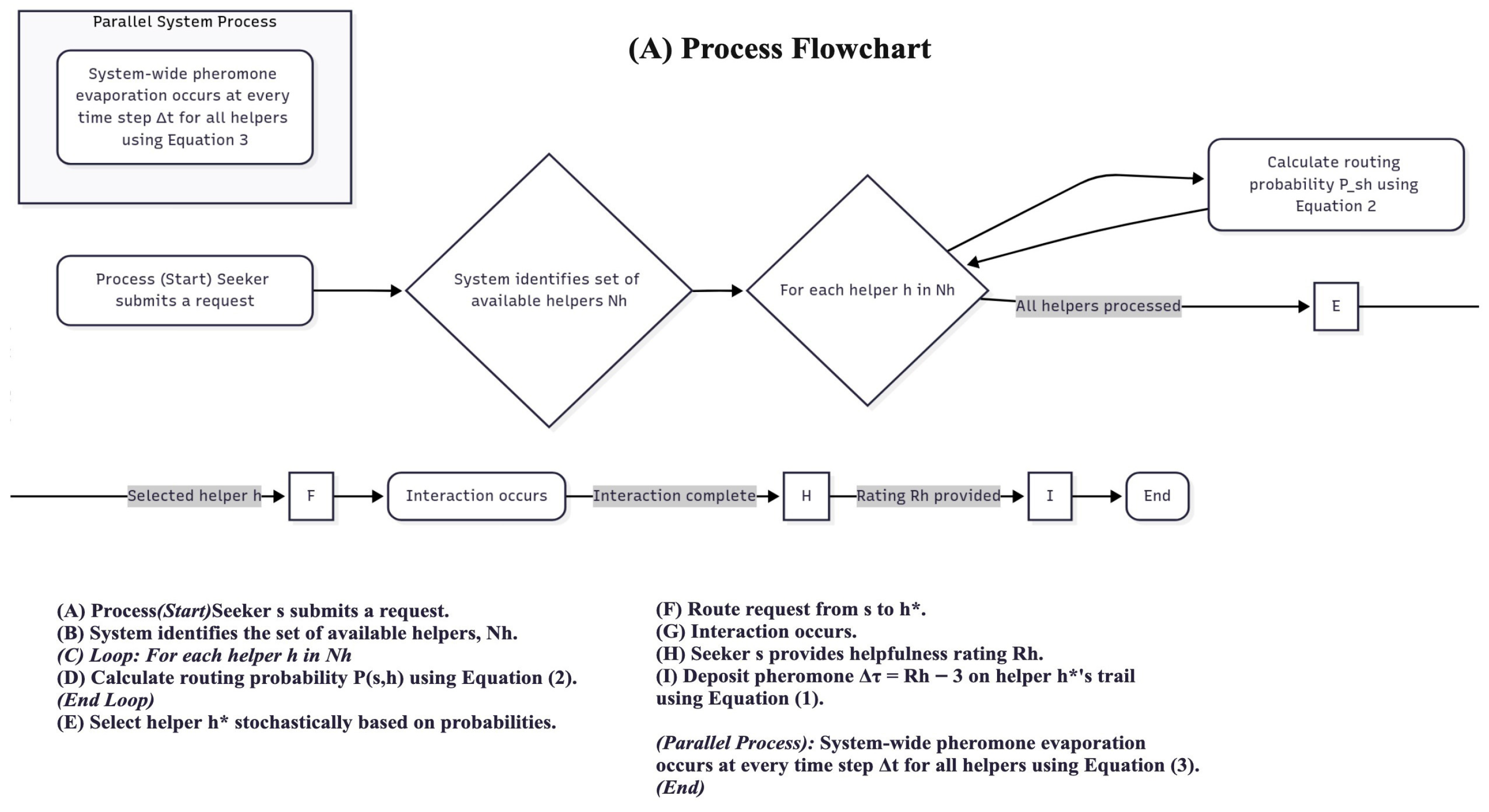
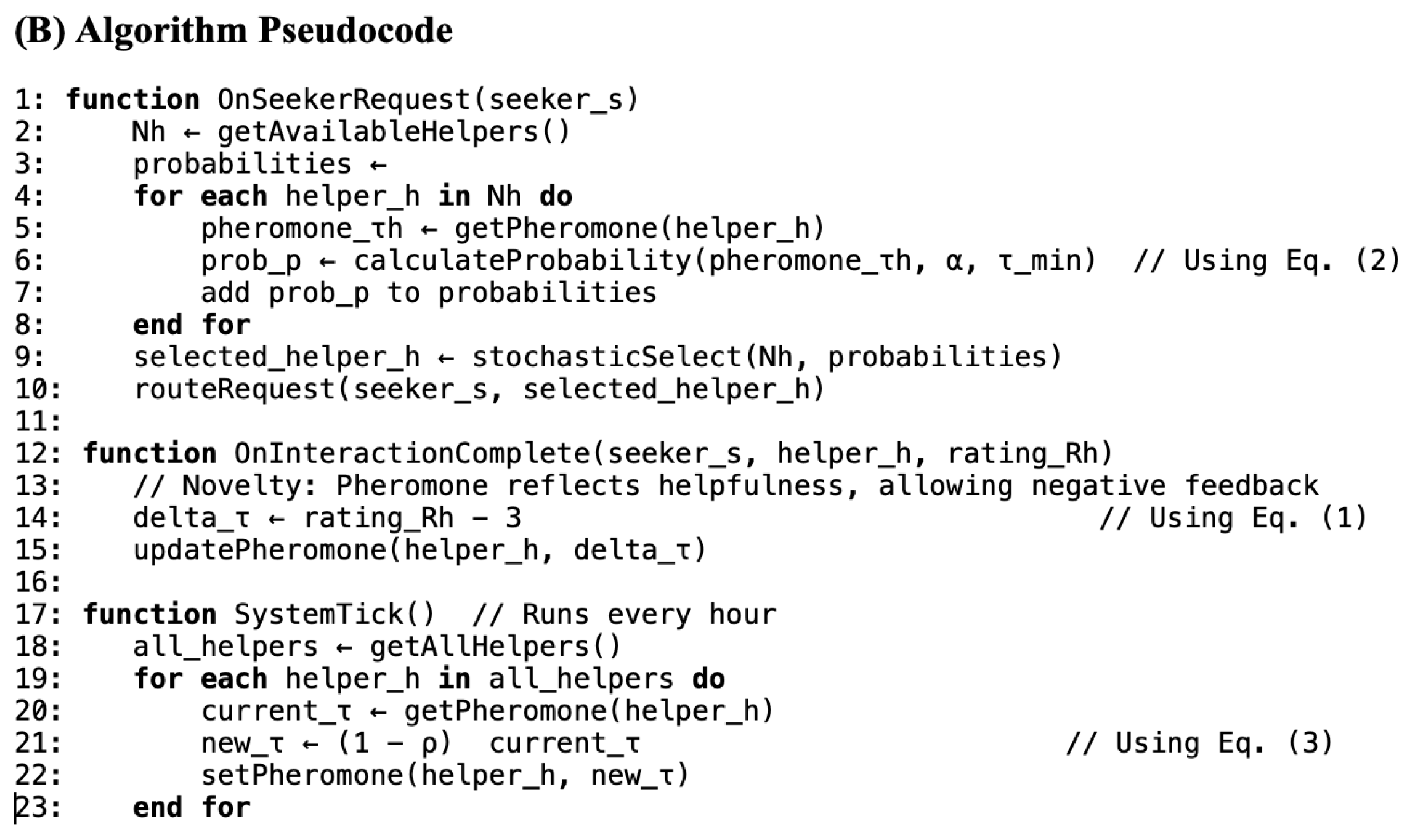
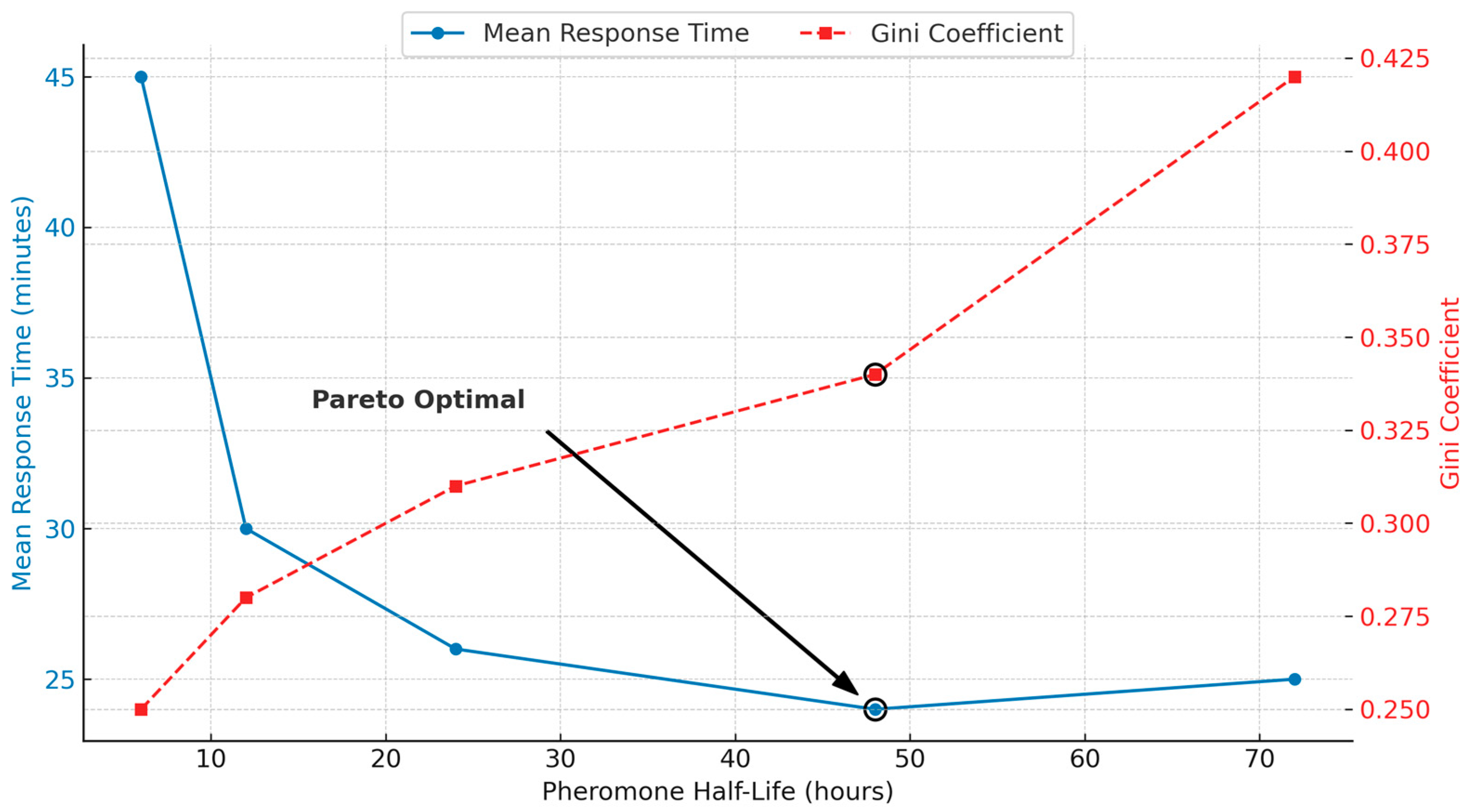

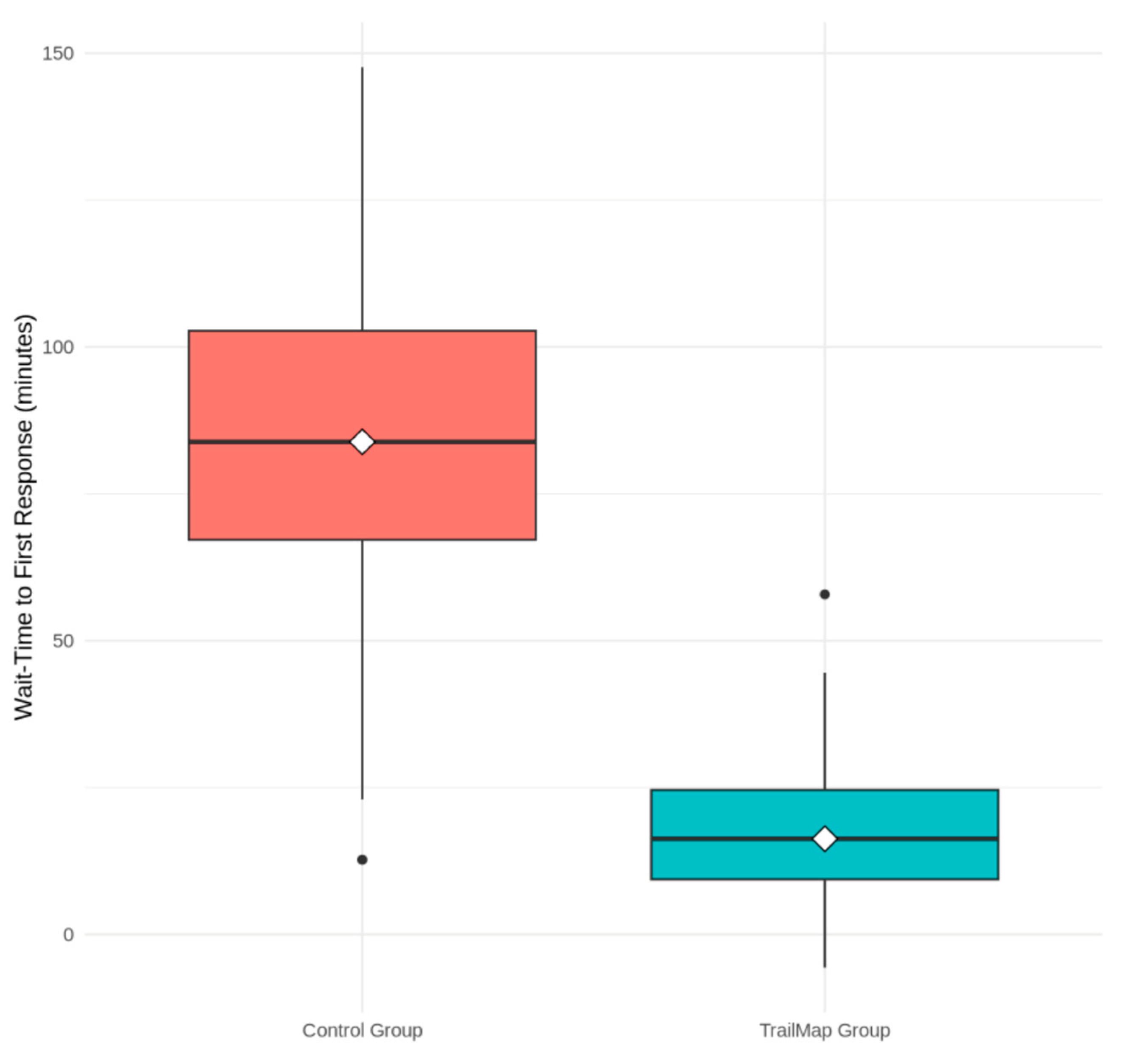
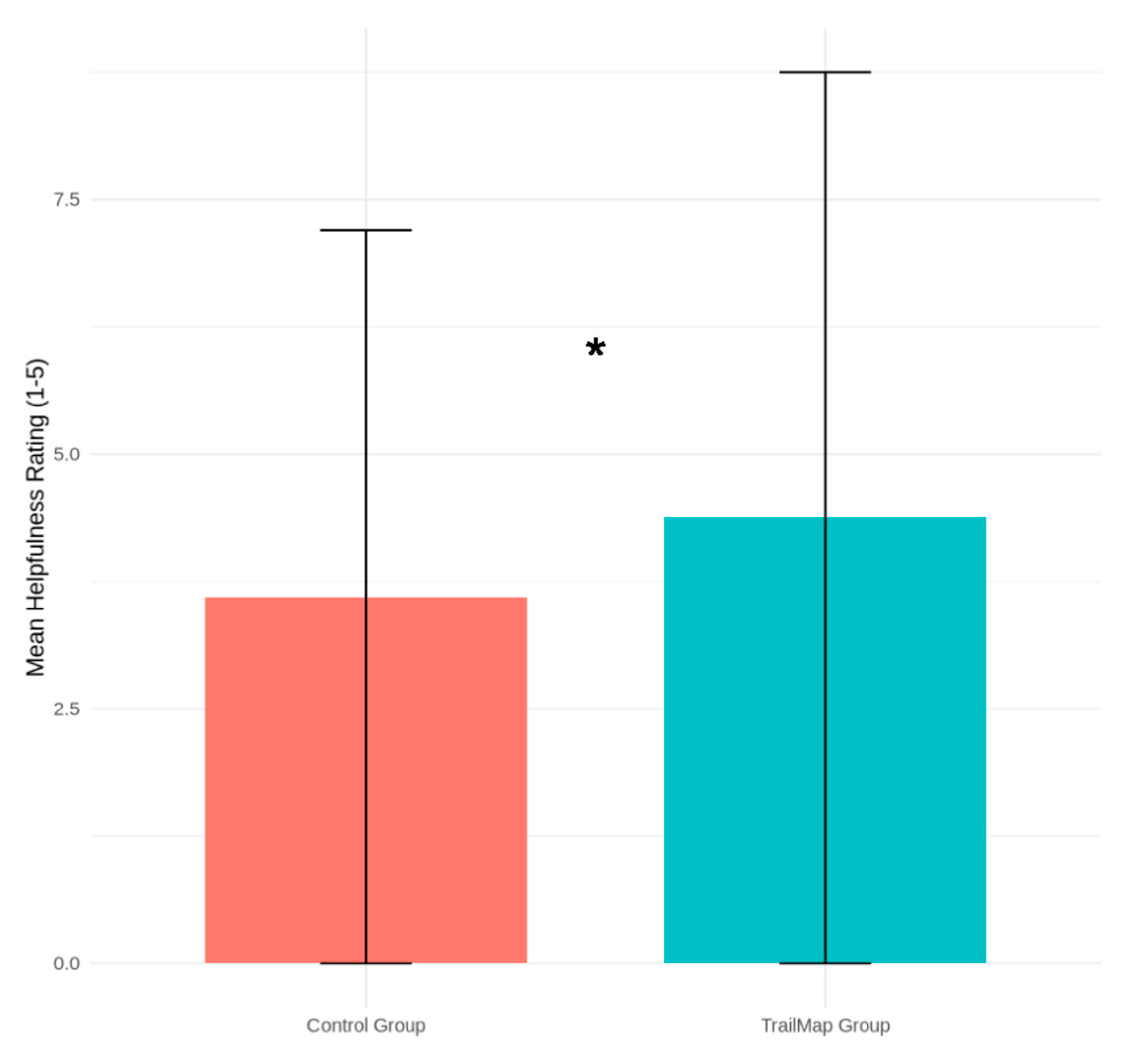
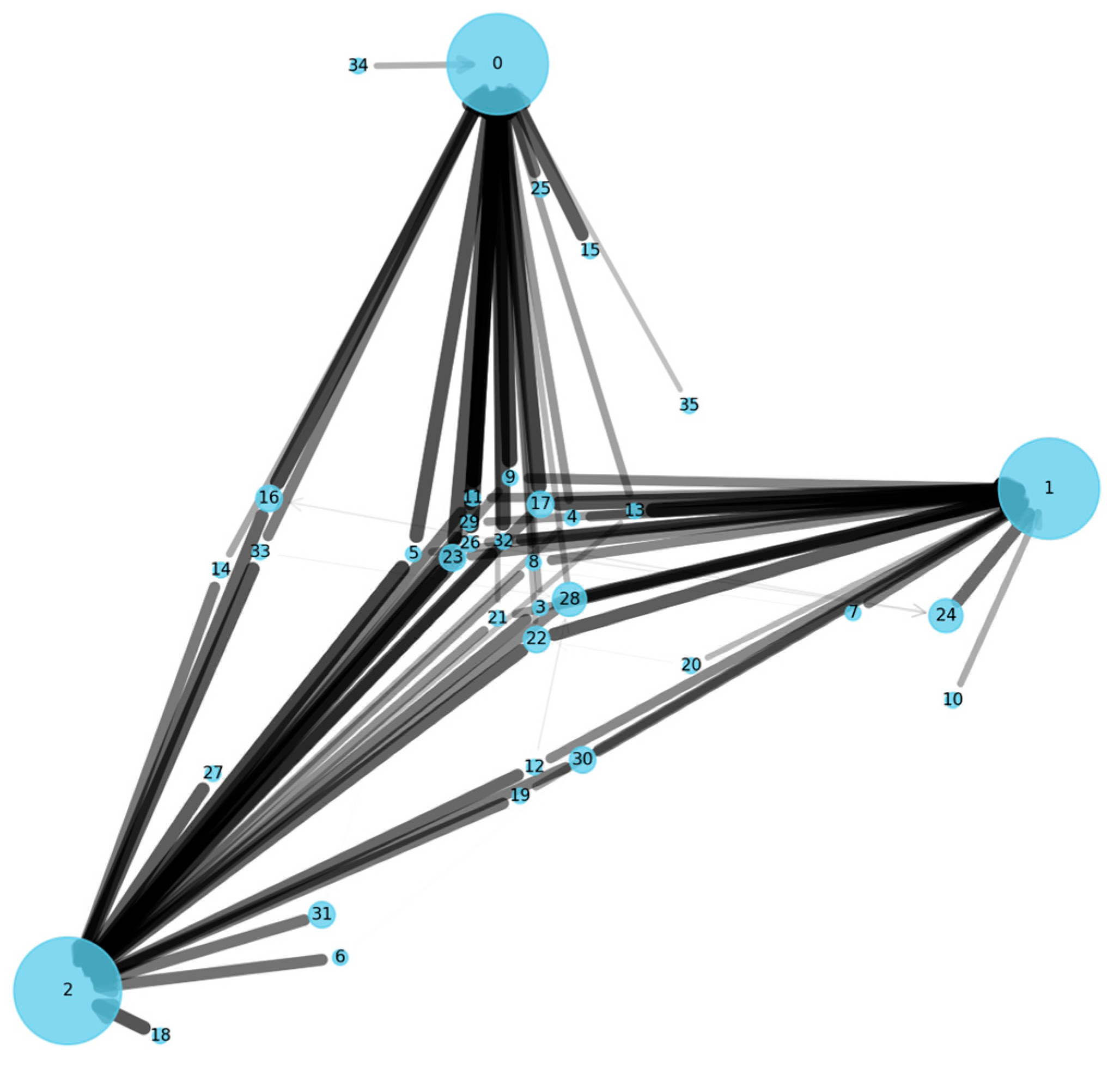
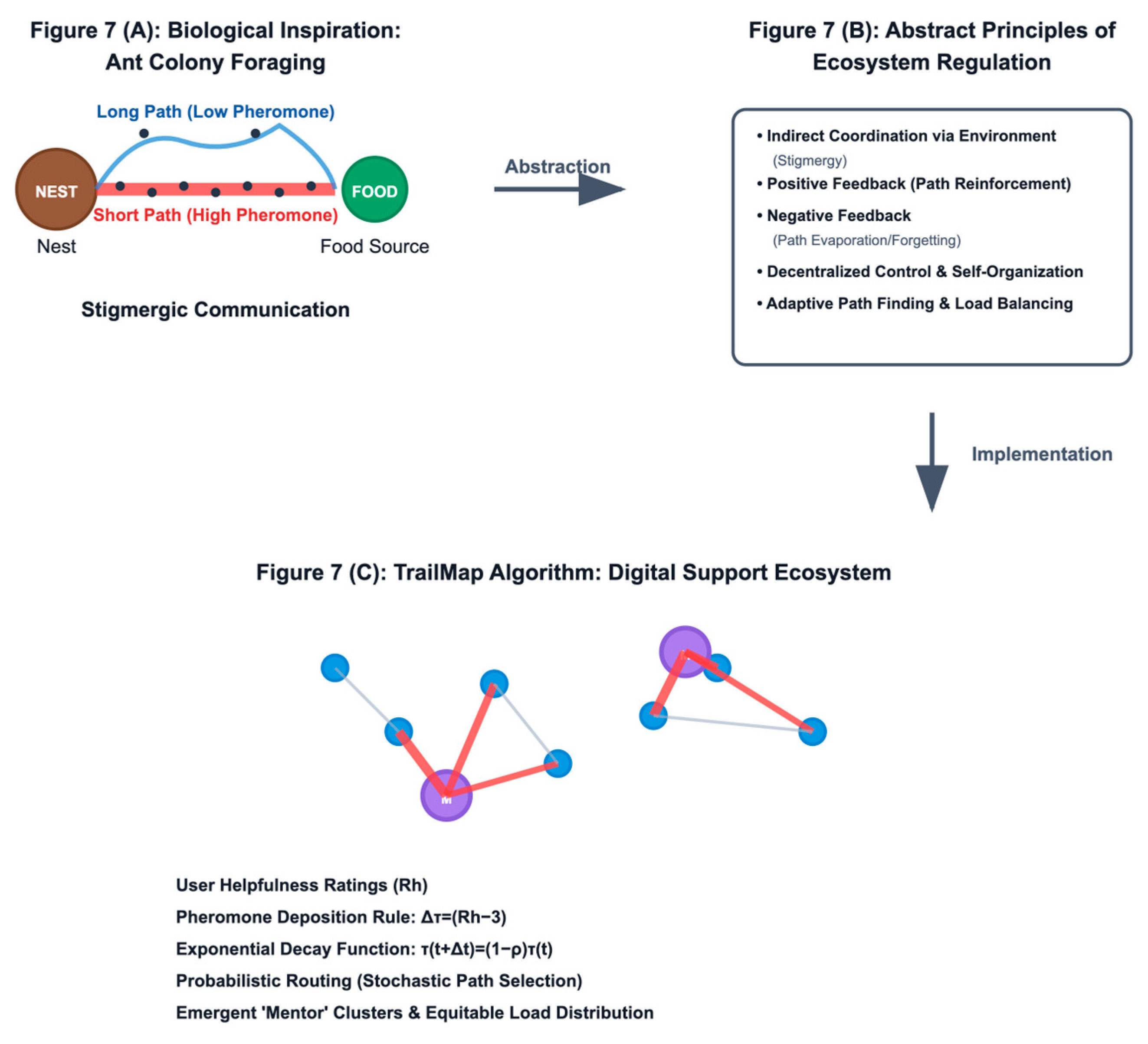
| Parameter | Symbol | Value/Distribution | Description |
|---|---|---|---|
| Total Agents | N | 1000 | The total number of individual agents in the simulated community. |
| Seeker Proportion | 0.2 | The fixed proportion of agents actively seeking help at any given time. | |
| Helper Proportion | 0.8 | The fixed proportion of agents available to provide help. | |
| Latent Helpfulness | Beta (α = 2, β = 5) | An intrinsic helpfulness score for each helper, drawn from a right-skewed Beta distribution to model a community with fewer exceptionally effective helpers. | |
| Helpfulness Rating | Discrete distribution (μ = ) + Gaussian noise | The rating a seeker provides, generated stochastically with the helper’s latent score as the mean, plus noise to simulate subjective perception. | |
| Simulation Duration | 720 h (30 days) | The total virtual time for which each simulation run was executed. | |
| Time Step | Δt | 1 h | The discrete interval at which system-wide pheromone evaporation was calculated. |
| Characteristic | Subcharacteristic | TrailMap Group (n = 36) | Control Group (n = 35) | Total (N = 71) |
|---|---|---|---|---|
| Age (years) | Mean (SD) | 22.4 (2.8) | 22.1 (2.5) | 22.3 (2.6) |
| Gender | Woman | 20 (55.6%) | 19 (54.3%) | 39 (54.9%) |
| Man | 15 (41.7%) | 15 (42.9%) | 30 (42.3%) | |
| Nonbinary/Other | 1 (2.8%) | 1 (2.9%) | 2 (2.8%) | |
| Previous Peer Support Experience | Yes | 9 (25.0%) | 8 (22.9%) | 17 (23.9%) |
| No | 27 (75.0%) | 27 (77.1%) | 54 (76.1%) |
| Condition | Mean Time to Helpful Response (min) | Gini Coefficient of Load Distribution |
|---|---|---|
| Random Routing (Control) | 84 | 0.58 |
| TrailMap (48 h half-life) | 24 | 0.34 |
| Outcome Measure | TrailMap Group (n = 36) | Control Group (n = 35) | Test Statistic, p-Value | p-Value |
|---|---|---|---|---|
| Median Wait Time (min) | 19 (IQR: 12–31) | 82 (IQR: 45–124). | U = 217 | p < 0.001 |
| Mean Helpfulness Rating | 4.31 (SD: 0.68) | 3.45 (SD: 1.02) | t(69) = 4.51 | p < 0.001 |
| Biological System Component (Ant Colony) | Abstract Principle | TrailMap Implementation (Online Support Ecosystem) |
|---|---|---|
| Ant colony seeking food | A community seeking a distributed resource | A peer support community seeking helpful interactions. |
| Individual ants | Autonomous agents with simple rules | Individual users (seekers and helpers). |
| Physical environment (ground) | A shared medium for indirect communication | The platform’s interaction graph and digital space. |
| Pheromone chemical | A volatile, quantitative trace of positive interaction | A numerical weight, τ, on a potential seeker-helper path |
| Pheromone deposition by ants | Stigmergic reinforcement based on success | Deposition of ‘digital pheromones’ ∆τ based on user-provided helpfulness ratings |
| Pheromone evaporation over time | Forgetting mechanism for adaptivity and dynamism | Exponential decay of τ over time, allowing the system to forget inactive or unhelpful users. |
| Ants’ probabilistic path following | Stochastic exploration biased by trace strength | A probabilistic routing algorithm that biases seekers towards helpers with high τ but still allows for the exploration of new helpers. |
| Discovery of shortest paths | Emergent optimisation of efficiency | Reduction in wait time for a helpful response. |
| Dynamic switching between food sources | System adaptiveness and resilience | Dynamic re-routing away from burned-out/inactive helpers and towards newly active and effective helpers |
| Collective foraging behaviour | Self-organising load balancing | Equitable distribution of support requests (lower Gini coefficient), mitigating the ’super-helper’ phenomenon. |
Disclaimer/Publisher’s Note: The statements, opinions and data contained in all publications are solely those of the individual author(s) and contributor(s) and not of MDPI and/or the editor(s). MDPI and/or the editor(s) disclaim responsibility for any injury to people or property resulting from any ideas, methods, instructions or products referred to in the content. |
© 2025 by the authors. Licensee MDPI, Basel, Switzerland. This article is an open access article distributed under the terms and conditions of the Creative Commons Attribution (CC BY) license (https://creativecommons.org/licenses/by/4.0/).
Share and Cite
Ngabo-Woods, H.; Dunai, L.; Verdú, I.S.; Turcanu, D. TrailMap: Pheromone-Based Adaptive Peer Matching for Sustainable Online Support Communities. Biomimetics 2025, 10, 658. https://doi.org/10.3390/biomimetics10100658
Ngabo-Woods H, Dunai L, Verdú IS, Turcanu D. TrailMap: Pheromone-Based Adaptive Peer Matching for Sustainable Online Support Communities. Biomimetics. 2025; 10(10):658. https://doi.org/10.3390/biomimetics10100658
Chicago/Turabian StyleNgabo-Woods, Harold, Larisa Dunai, Isabel Seguí Verdú, and Dinu Turcanu. 2025. "TrailMap: Pheromone-Based Adaptive Peer Matching for Sustainable Online Support Communities" Biomimetics 10, no. 10: 658. https://doi.org/10.3390/biomimetics10100658
APA StyleNgabo-Woods, H., Dunai, L., Verdú, I. S., & Turcanu, D. (2025). TrailMap: Pheromone-Based Adaptive Peer Matching for Sustainable Online Support Communities. Biomimetics, 10(10), 658. https://doi.org/10.3390/biomimetics10100658











